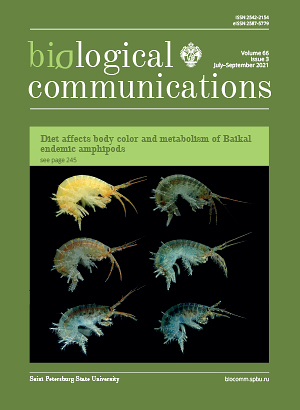Species- and age-dependent distribution of retinol and α-tocopherol in the Canidae family during the cold season
DOI:
https://doi.org/10.21638/spbu03.2021.304Abstract
Vitamins A and E are known as nutrients involved in metabolic processes and facilitating the adaptation of animals. The metabolism of these vitamins is closely related to lipid metabolism, which has seasonal variations in animals inhabiting northern latitudes. The aim of this study was to investigate the concentrations of retinol (vitamin A) and α-tocopherol (vitamin E) in the cold season (October to February) in tissues of Canidae species that have different ecological characteristics: the blue fox (Vulpes syn. Alopex lagopus), silver fox (Vulpes vulpes), their interspecific hybrids (Vulpes×Vulpes), raccoon dog (Nyctereutes procyonoides), and grey wolf (Canis lupus). In addition, age-related differences in the levels of these vitamins were determined. Results showed the distribution of retinol and α-tocopherol in the body of the canids was similar, with larger amounts being found in the liver and kidney cortex, which play a regulatory role in the metabolism of these nutrients. The higher retinol level in the liver of wolves and interspecific hybrids of blue fox and silver fox, as compared to the retinol level in the liver of other species, might be species-specific and could also be attributed to dietary differences. The blue fox and raccoon dog both have a higher capacity for α-tocopherol accumulation in the cold season, apparently due to their ability to store substantial fat reserves. Retinol and α-tocopherol levels were generally higher in the tissues of mature animals.
Keywords:
canids, cold season, ecological features, retinol, α-tocopherol
Downloads
References
Downloads
Published
How to Cite
License
Articles of Biological Communications are open access distributed under the terms of the License Agreement with Saint Petersburg State University, which permits to the authors unrestricted distribution and self-archiving free of charge.





